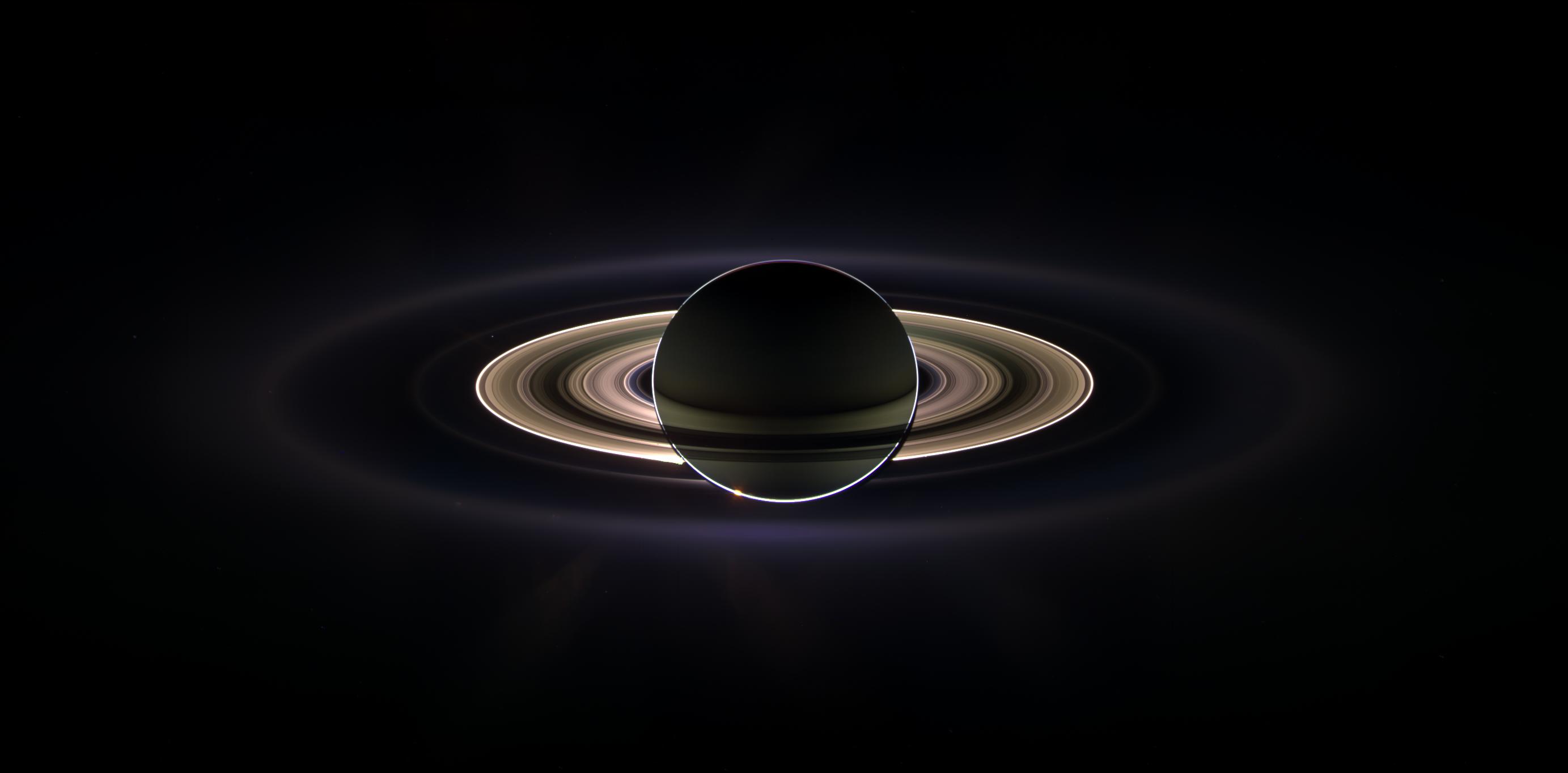When Cassini was launched in 1997, there were 18 known moons of Saturn. By the time it reached Saturn in 2004, 13 others had been discovered by Earth-based telescopes. By now, 62 moons have known orbits, but if you think about it, the rings could be thought of as made of billions of moons, since there is no objective measure of moon size limits. There are 7 moons large enough to be spherical, including the second-largest in the solar system--Titan. There are 53 named moons, most less than 50 km in diameter. Cassini has been orbiting Saturn for seven years, and with its tremendously high resolution camera taking extremely close-up pictures, each moon becomes a world of fantastic interest in its own right. The images are so diverse that it is nearly impossible to show all of the interesting ones. Cassini was directed to crash into Saturn in 2017 (watch this moving tribute about 3/4 of the way down the page).
Phoebe close-up Most distant of the larger moons, it had one close flyby. It is probably icy, but covered with a thin layer of dark material.
Iapetus (two-faced moon) One half (the leading side) is dark as coal, while the other half (trailing side) is white as snow. It has had two close flybys. The transition between dark and white is interesting. It is thought that dark material causes absorption of heat and sublimation of the white frost or snow. Iapetus has an equatorial ridge.
Hyperion (remnant of a larger moon destroyed by impact). It has an interesting pock-marked surface on one side. Close-up photo.
Titan (methane-shrouded moon). Titan has had 5 close flybys, and the Huygens probe was dropped through its atmosphere on onto its surface! Titan has river valleys, lakes (radar image). The view of Titan with Saturn's rings can be very beautiful. Titan lit from behind shows the refraction of sunlight in its atmosphere.
Rhea (second largest moon of Saturn) has had 4 close flybys. Again, viewed against Saturn it is beautiful. It looks like a rough ice-ball.
Dione (icy wisps due to fractured areas) has had 3 close flybys, with more to come. And also much smaller Helene, tidally locked to Dione.
Enceladus (spewing water out of cracks in its southern hemisphere), reflects ~100% of the sunlight falling on it. The fissures are warmer (only -140 F) than the surrounding ice, and there may be an area of liquid water under the surface. Note the lack of craters indicating a young surface.
Tethys (more tidal warming, as we come closer to Saturn). Tethys is dominated by a large crater (Odysseus), and a huge canyon (Ithaca Chasma). Again, seeing these moons in the context of Saturn and its rings is spectacular. Here is a family portrait, Tethys and Enceladus.
Mimas (death star, closest major moon of Saturn, influences the outer part of the B ring of Saturn) The changing positions of Saturn's moons makes for startling movies. Here is another one, showing four moons.
Janus and Epimetheus share the same orbit.
Sheparding moons Pan, Pandora, Prometheus, (fantastic video of Prometheus interaction with the F ring)
For the most part, Saturn's rings are extremely thin (only about 10 m!). However, the outermost part of the B ring, influenced by Mimas, has a substantial third dimension seen best at low Sun angle as in this image. There may be other moonlets up to 1 km in size in this region.
The phenomena of the rings include spokes (areas of fine material above or below the ring plane), propellers (spots disturbed by unseen moonlets), spiral perturbations (density waves and bending waves), braiding of the F ring, gaps such as the Encke division (within the A ring), Cassini division (between A and B rings), Keelers gap (caused by the moon Daphnis). This closeup of Encke division shows the creation of waves in the A ring.
The G ring is an outer, faint ring. There are even partial rings (arcs) associated with outer moons. The F ring is separated by the Roche division from the dense A ring. Although the A ring looks thick and bright, it is actually semi-transparent. Here is another fantastic view showing rings, planet, shadows, and moon.
